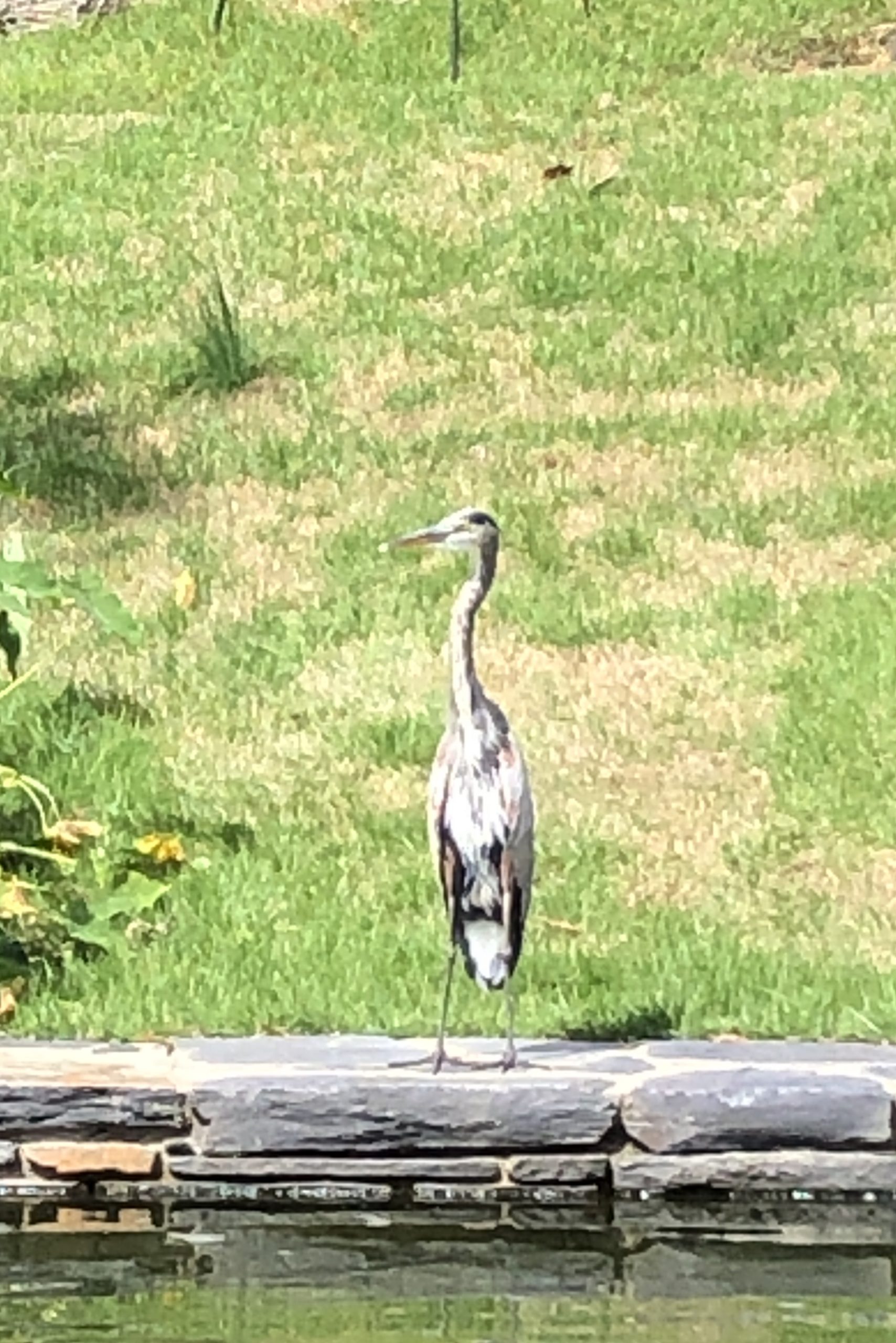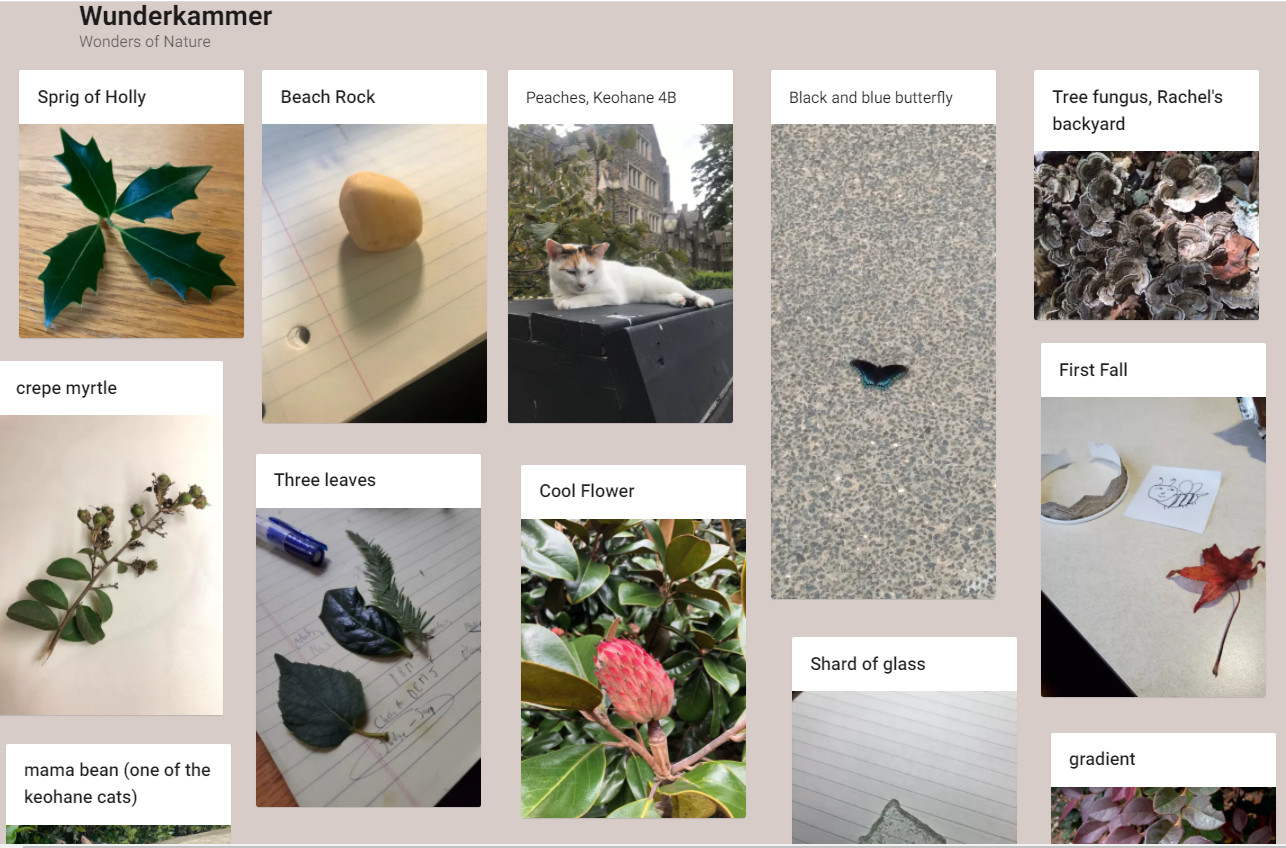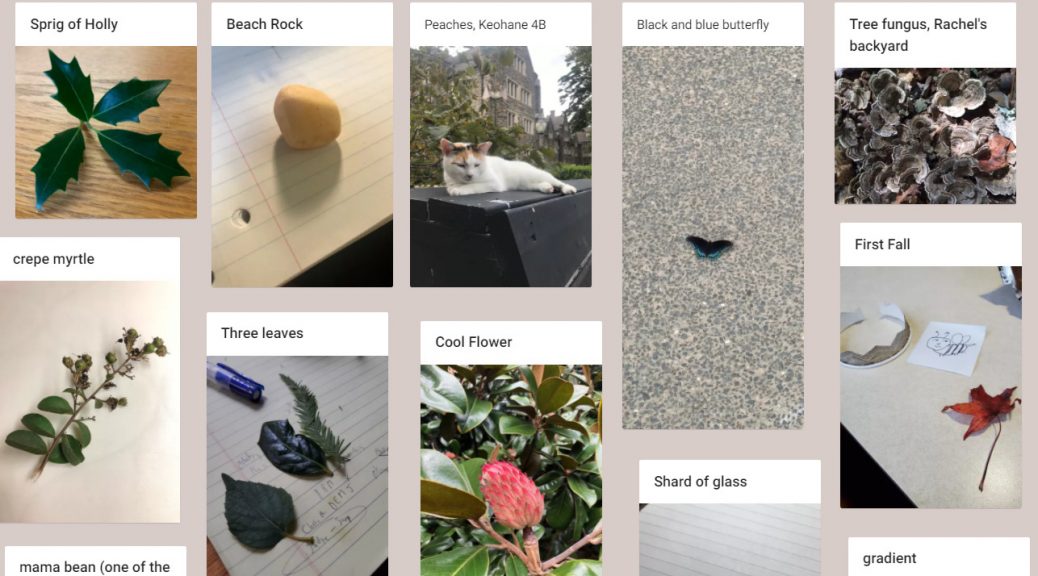Post contributed by Josh Rubin, a first-year student at Duke University from Gaithersburg, Maryland. Rubin is majoring in biology with potential minors in chemistry and linguistics.
As a part of the MedRen Focus program this fall, I was able to participate in the Cabinet of Curiosity activity. This activity, along with Lorraine Daston’s chapter on “Marvelous Particulars” in Wonders and the order of nature, exposed me to, what I believe to be, one of the most interesting Renaissance concepts: wonder.

For this Cabinet of Curiosity activity, I was required to find an item in nature, describe it using only sensory vocabulary, and attempt to classify it based on categories I would create myself. These categories were not intended to reflect the knowledge we possess today. I was supposed to embody a Renaissance naturalist and organize what I found in nature based on characteristics from direct observation. I ended up taking a stroll through Duke Gardens with another member of my focus cluster to begin my search. It didn’t take long for us to pass the Koi pond and walk by the most elegant type of bird. We ended up staying about half an hour just to watch its behavior and actions. I decided to take a picture of it and, inevitably, it became my object for the activity. I described it as being a blueish gray color, having expandable appendages, and as something which possessed the marvelous ability to fly. If I were to have a cabinet of curiosities of my own, it would be centered around exotic creatures, with this creature in particular being classified as an aviation animal, one with the occult ability to lift itself off of earth’s bounds.

For several interrelated reasons during the Renaissance, the distinct discipline of wonder–the careful examinations of natural marvels–provided a means of elaborating on the inquiries which developed about the unknown. The studies by Renaissance naturalists and physicians like Giovanni Dondi and Michele Savonarola explained the reasons natural marvels were able to satisfy such queries. First, it was speculated that “most marvels… derived their wonderful properties from occult properties… Second, their intrinsic fascination and charisma set them apart from mundane phenomena,” and third, the mere expansion into the New World further broadened the heterogeneity of marvels simply given their novelty (Daston 136). Thus, a “marvel” or “natural wonder” was a label for an entity with captivating, inexplicable, and unfamiliar physical and functional properties. Such a determination relied on that fact that the emergent study of wonder was empirical and collaborative. To the former, a marvel’s intrinsic properties could not have been recognized from their superficial features but had to be deduced from the senses which were viewed as infallible. To the latter, many of the mysterious properties of marvels had to be described for the first time by Europeans, requiring diverse expert knowledge to generate complex associations as a way to classify such unusual phenomena. In light of the unknown, wonder differed from traditional natural philosophy because it embraced “the emotion of wonder itself” (Daston 144). Characterized by the sense of awe, studying the marvel provided a way to comfort the limitations of the human mind and satisfy the need to regain human control of the unknown. Some additional aspects of wonder worth mentioning include its focus on diversity as opposed to universality and the notion that the people who studied the marvelous were deemed wonders themselves.



Wonderful post! You illustrate here something great that studying history can do: help us to see our own world with fresh eyes.